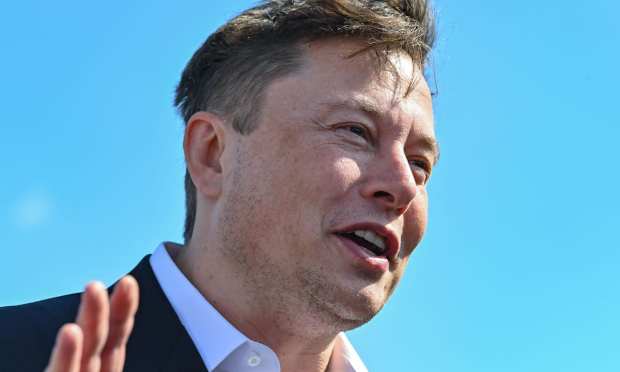Elon Musk Does Not Object to Twitter NFTs, He’s Just Venting at Spambots

Tesla and SpaceX CEO Elon Musk does not have a problem with Twitter adding the ability of users to use a nonfungible token (NFT) as their profile picture — putting it in an octagonal window rather than a circle.
The point of the change is it amounts to a verification that you really own that six-figure CryptoPunk NFT avatar, and you’re not just using a screenshot of it. That’s a thing now — people have been using their Twitter portraits as venues to display popular NFTs. It’s a way to show that they are part of a group; they own a super-hot CryptoPunk or are part of the (Bored Ape Yacht) Club.
See also: NFTs Target Collectors Market With Avatars, Celebrities
Musk complained about the proliferation of spambots on his favorite social media site. Declaring it “annoying,” Musk reposted an image of Twitter’s announcement, “Introducing NFT Profile Pictures,” to his 71 million followers.
This is annoying pic.twitter.com/KAkDl29CTX
— Elon Musk (@elonmusk) January 21, 2022
Read also: Twitter Rolls out NFT Profile Pictures Verification
“Twitter is spending engineering resources on this bs while crypto scammers are throwing a spambot block party in every thread!?” he tweeted at 4:12 a.m. Jan. 21.
See also: What Are NFTs and Why Are They Crypto’s Newest ‘Next Big Thing?’
Considering that Musk’s Twitter commentaries on cryptocurrencies dogecoin and bitcoin routinely move their prices up or down to such a large extent that it’s been compared to legendary investor Warren Buffett’s ability to move stock markets, Twitter’s marketing team must have been weeping with joy.
Look at Jan. 29, 2021, when Musk changed his Twitter bio to “#bitcoin” — taken as a show of favor. The price spiked about $5,000 in the space of six hours, a change of 20%.
That added — very briefly — $100 billion to the market capitalization of bitcoin.
Read more: Elon Musk Moons Dogecoin, Showing the Power of His 66M Twitter fan-atics
See also: From Famous Artists to Forgers, the Art World Embraces NFTs
What’s a Spambot?
On Twitter, spambots are automated accounts controlled by software programmed to do specific things, notably liking and retweeting other tweets. This is done not just to scam people out of money, but to spread misinformation — anti-vaccine and other COVID-19 misinformation is a prime use at present — and fake news to manipulate public opinion.
Twitter revealed in a 2018 blog post that it had discovered “a total of 50,258 automated accounts that we identified as Russian-linked and Tweeting election-related content during the [2016 presidential] election period.”
It added at the time that it detects and blocks “approximately 523,000 suspicious logins daily for being generated through automation.”
In September, Twitter head of site integrity Yoel Roth noted in a separate blog post that Twitter’s algorithms challenge between 5 million and 10 million accounts a day, supported by a team of forensic investigators.
“After the 2016 election, a combination of increased news coverage and general consumer savviness led to a growing awareness that social media could be weaponized to divide people,” the company said in the post.
But, Roth added, “On one hand, I’m really glad that people are now talking about social media manipulation in a way where they understand what it is… The problem is manipulation becomes shorthand for any situation in which you don’t want to engage with somebody that you disagree with.”
Not a Hack
What Musk is not doing, really, is complaining about accounts being hacked. Musk, along with Buffett, Jeff Bezos, Kim Kardashian, then-presidential candidate Joe Biden, and about 125 hugely famous people had their Twitter accounts hijacked on July 15, 2020, as a part of a crypto giveaway scam.
These involve a tweet that reads something like this one from the verified Joe Biden account: “I am giving back to the community. All Bitcoin sent to the address below will be sent back doubled! If you send $1,000 I will send $2,000. Only doing this for 30 minutes.”
The scammer received about $100,000 all told. But actual account hacks are rare — often it is a fake account claiming to be the person. And it’s not only the famous. Plenty of crypto industry insiders are hit regularly, and not just on Twitter.
Ripple CEO Brad Garlinghouse sued YouTube in April 2020 for damaging his own brand and the Ripple brand by allowing a similar scam site to proliferate, even when a complaint was filed. These were frequent enough that Ripple has an outside firm searching for them, he revealed.
Then there was the time in late 2018 when Twitter’s security team locked down Musk’s account for several hours after he tweeted “Wanna buy some Bitcoin?” — which they took as a sign that his account had been hacked.
